The American Light Tank M3A1 turned out to be a strange tank. On one hand, it had several superior characteristics to its predecessor, the Light Tank M3. Some elements of the design were a definite step forward. For example, the Americans began to use welding to assemble it. On the other hand, some design decisions reduced its battle worthiness. The tank became cramped and uncomfortable for the turret crew. It's not surprising that another modernization quickly followed, which led to the most perfect form of the Light Tank M3 family: the Light Tank M3A3: a tank produced in large amounts, but almost ignored by the US Army.
Catching up with new standards
Despite all issues that the turret basket and gun stabilizer introduced, the Light Tank M3A1 was anything but a temporary measure. Almost as many were built as M3 light tanks, and they saw widespread use in combat, including in the US Army. However, this tank went into production under different conditions.
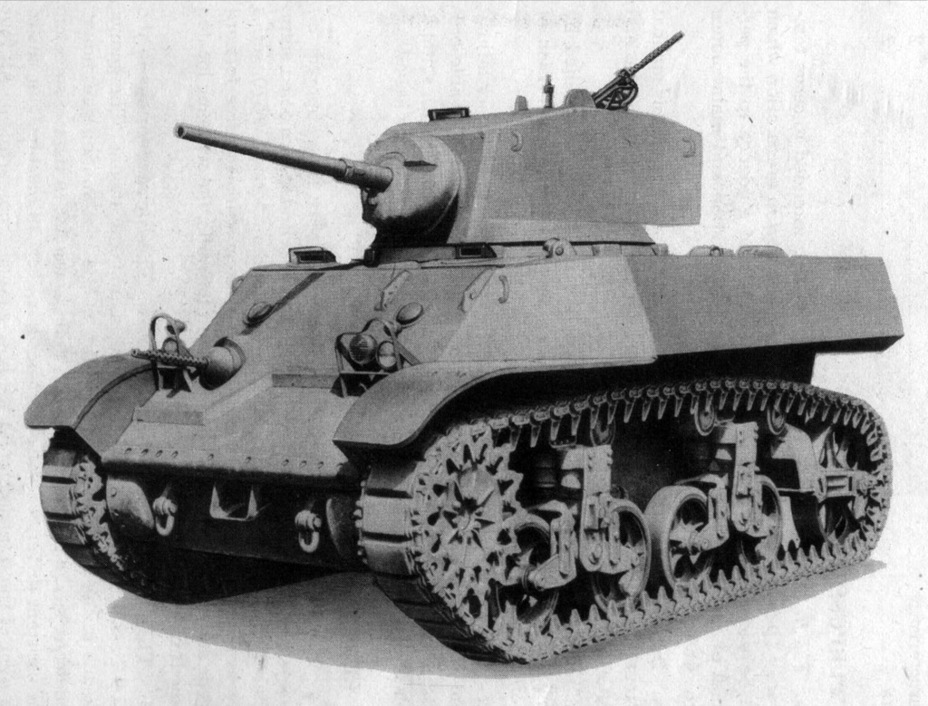
It so happened that a competition broke out among American light tank designers. One cause was that the aircraft engines used by American tanks were in high demand, which led to a search for alternatives. American medium tanks experienced a need of a new engine around the same time.
There was another reason to seek a new engine: the aircraft engine was very difficult to use. Automotive engines were a much simpler and convenient alternative for tanks. In November of 1941, the Light Tank M3A2 entered trials, carrying a pair of Cadillac Series 42 engines. This V-shaped 8-cylinder 110 hp engine seemed an attractive solution for the American military. On November 13th, the Ordnance Committee decided to accept the tank with a pair of Cadillac engines into service under the index Light Tank M4.
The tank entered production under a different name, and with serious design changes. Since the Medium Tank M4A1 entered production in February of 1942, the name of the light tank was changed to Light Tank M5. The bigger change was that the tank received a new hull, the most noticeable part of which was the reworked front plate, placed at an angle. This improved the tank's protection and increased the amount of space in the driver's compartment. The visibility decreased, but it was an acceptable sacrifice.
The new tank entered production in April of 1942, a month before the start of production of the Light Tank M3A1. The military liked the new hull, and asked for the same thing on the Light Tank M3A1. One of the mass production tanks was taken, and everything was removed but the chassis. A completely new design was installed above it. The prototype was built with mild steel.
The upper front plate was sloped, just like on the Light Tank M5. The sides were also sloped. The upper front plate consisted of two pieces. The lower one was attached with bolts, and had to be removed to access the transmission. A special deflector was added to protect the joint between the two. Since the observation devices in the front plate were removed, special openings were installed, closed with plugs. This was more of an emergency measure, since the driver and his assistant looked through the periscopes in the hatches during combat.
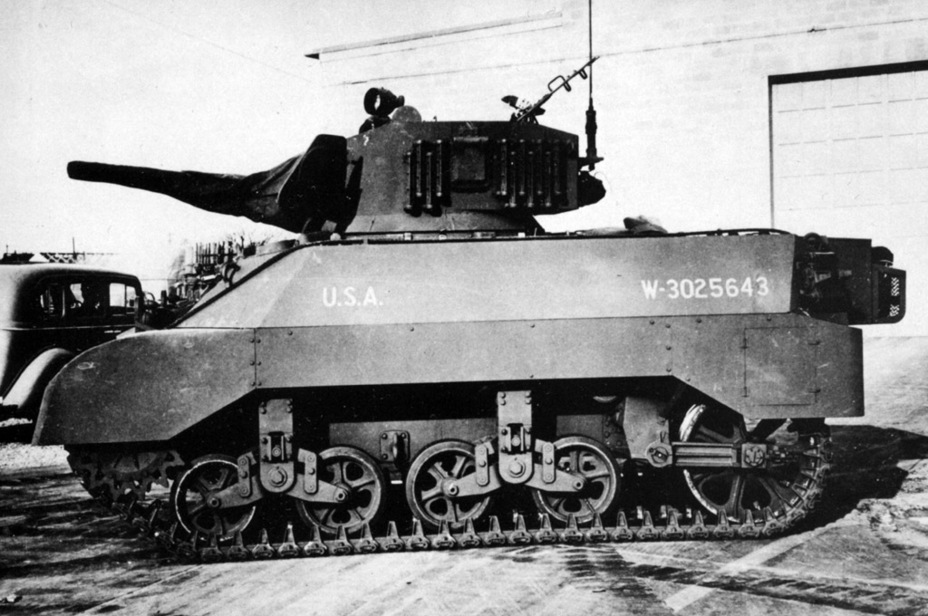
Another novelty was a fan in the driving compartment roof, positioned between the hatches. The driver and assistant driver's seats could elevate, letting the driver steer the tank while looking out of the hatch. The removable windshield was a pleasant addition. The problem of poor visibility was solved in this fashion.
The creators of the Light Tank M3A3 took their own route in some ways. The sides of the hull were sloped, while the Light Tank M5 had them straight. The characteristic «hump» above the engine compartment was also gone.
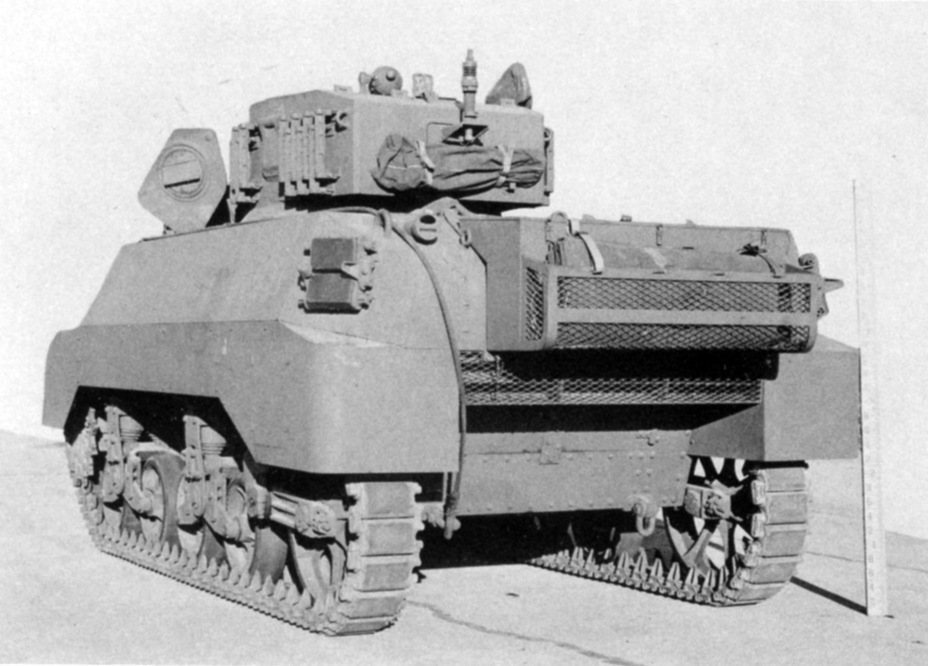
The turret also underwent radical changes. A large turret bustle was added. The radio migrated there, and the antenna was moved from the engine deck to the back of the turret. This made working with the radio a lot easier. The sides of the turret had carriers for grousers, which were installed on the tracks while driving across bad terrain. The AA machinegun was moved to the right side, and a spotlight was added to the roof. The roof itself changed radically: two large hatches were added, which made getting inside a lot easier. The gun mount also changed to the Combination Gun Mount M44. One of the novelties was the addition of a telescopic sight.
The changes made to the design resulted in the mass of the Light Tank M3A3 growing to 14,700 kg, almost two tons more than the Light Tank M3A1. Some changes had to be made to the suspension as a result. The increased mass also decreased the top speed to 50 kph. Considering the improved crew conditions, this was an acceptable sacrifice.
For Allied aid
The first mass production Light Tank M3A3 was built at the American Car & Foundry Company in September of 1942. The mass production received large dust shields, which attached to the fenders and sides of the hull. They were added for a good reason: British experience of using M3 and M3A1 light tanks in the desert revealed the need for dust shields, which noticeably reduced the size of the dust cloud kicked up by the tank. A large bin was added to the rear for personal belongings and a tarp. High demand for the Light Tank M3A1 and trials of the pilot vehicle led to the second Light Tank M3A3 only being finished in November of 1942.
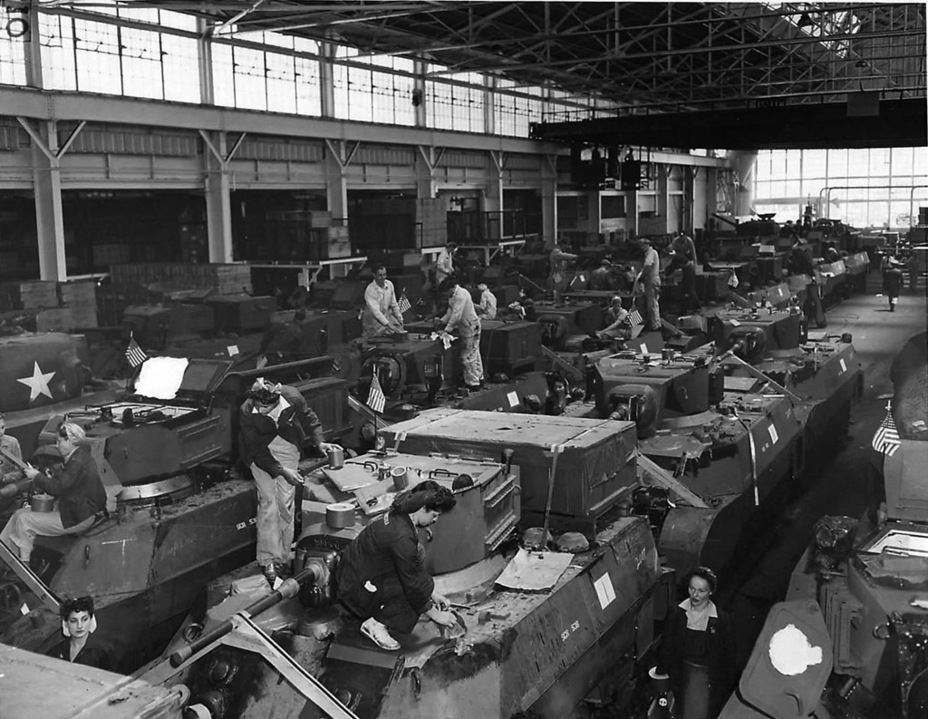
A number of events happened between the production of the first and second tanks that influenced its fate. The appearance of an improved turret did not go unnoticed. An analogous turret was developed for the Light Tank M5. On September 21st, 1942, the Ordnance Committee approved the tank with a new turret under the index Light Tank M5A1. In November, the first mass production tanks began leaving the Cadillac factory in Detroit.
This situation slammed the door on the Light Tank M3A3. It was heavier and slower than its competitor, without advantages in protection or any other parameter. With a maximum armour thickness of 25 mm, sloped armour did not matter much.
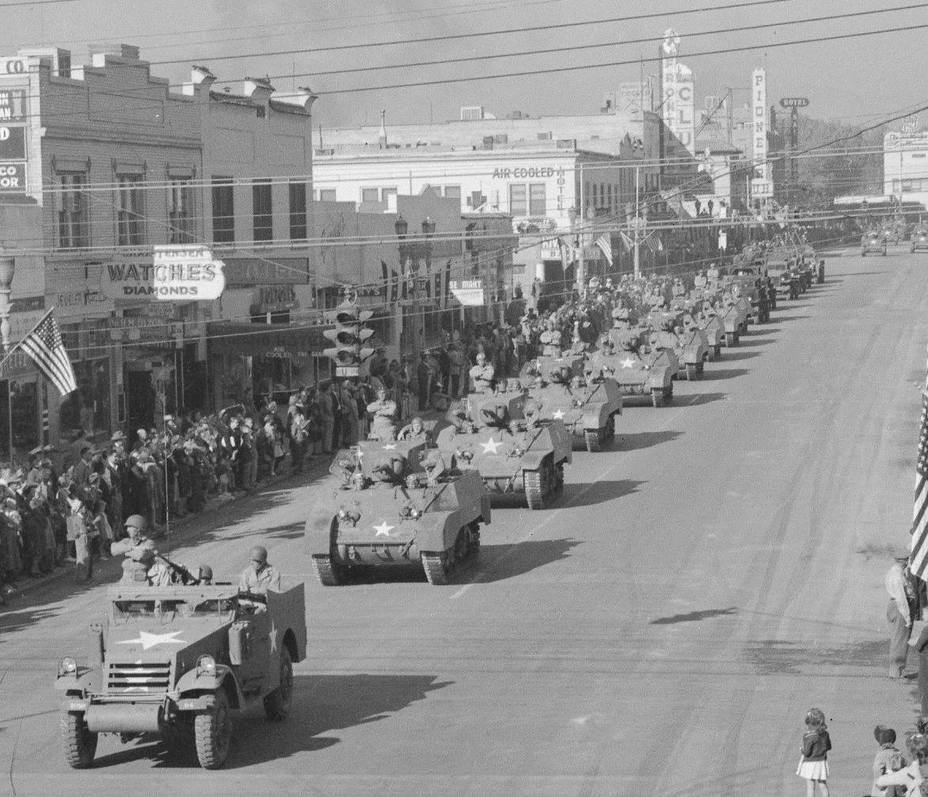
The military police was one of the few branches of the military to use the Light Tank M3A3. For example, the 751st battalion received these tanks. In April of 1943, the Ordnance Committee changed the status of the Light Tank M3A3 to «reduced standardization». The Army's choice directly impacted the development of SPGs on this platform. All projects stopped by early 1943.
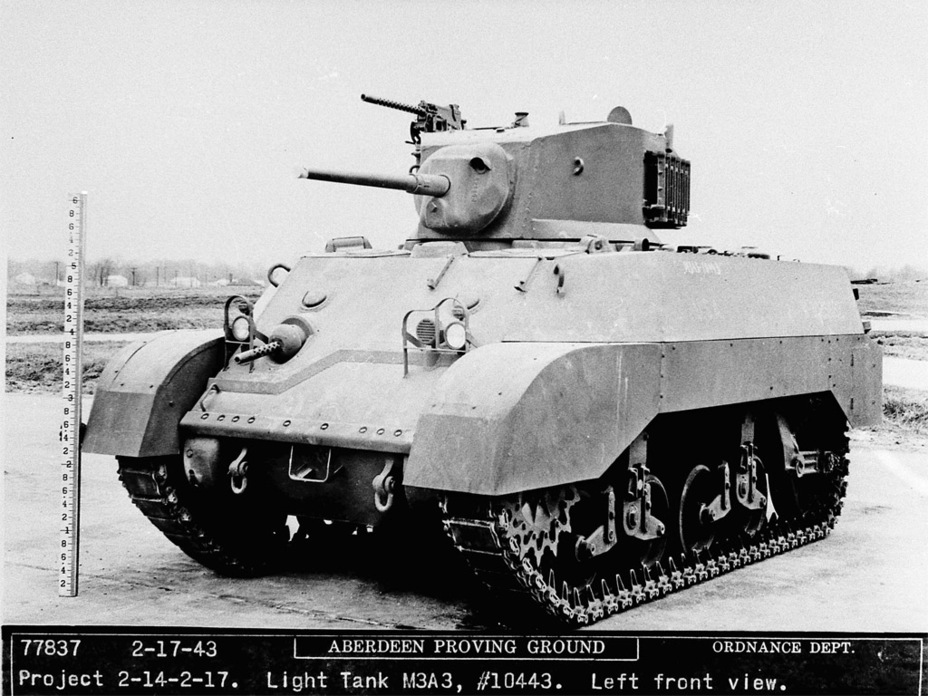
This turn of events did not mean that the tank was out of a job. Shipping of vehicles under the Lend Lease program was in full swing, and the USSR was not even the biggest recipient. The British army had the greatest need for American tanks, as it had no light tanks in production at all by 1943. The French, who were actively fighting in North Africa on the side of the Allies, also showed interest in the tank. The «Fighting French» were rather active in North Africa, where the British supplied them with tanks at first.
The American Car & Foundry Company locked down its market.
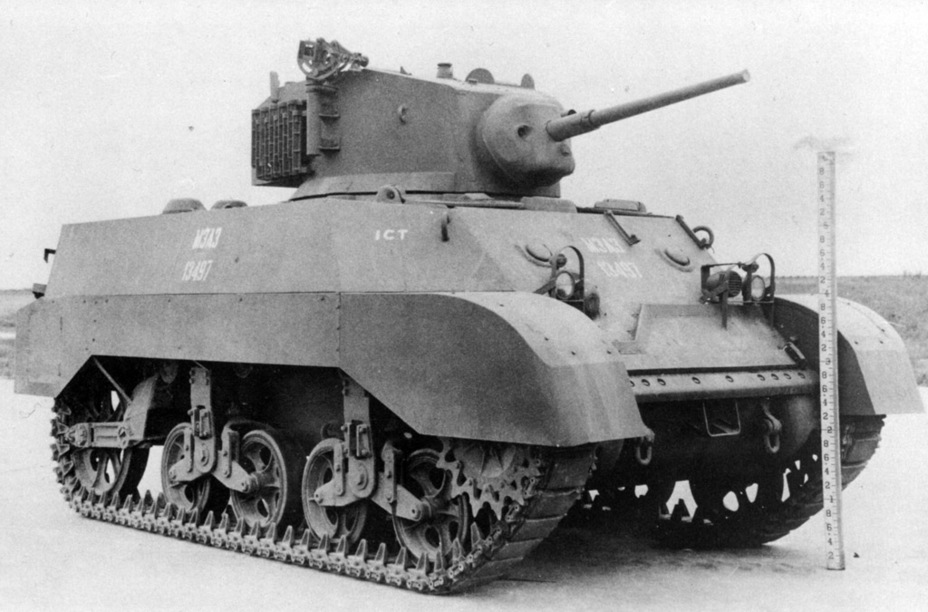
Full scale production of the Light Tank M3A3 began in January of 1943, after production of the Light Tank M3A1 ended. Tanks were sent directly to the British army, although they came too late to see the defeat of the Africa Corps in Tunisia. Changes were slowly introduced into the design, dictated by experience in combat. Starting with tank #10443, the pistol ports in the turret were removed. Late production tanks also had different toolboxes.
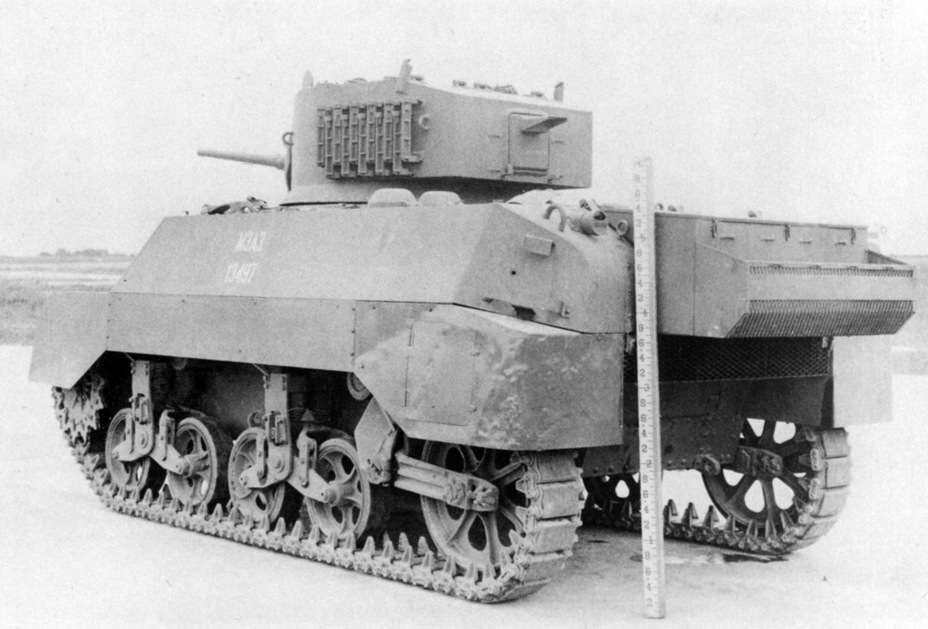
The last Light Tank M3A3 left the American Car & Foundry Company factory in November of 1943. 3427 tanks of this type were built in total. By then, the USA was the last nation in the world to mass produce light tanks. Fighting in the spring and summer of 1943 drew scrutiny to the light tank as a class. Weak armour and rapid development of new anti-tank measures left them few chances for survival on the battlefield, even when fighting against infantry units. The USSR ceased production of light tanks by the fall of 1943. Germany made the decision to drastically limit production and reduce their duties to reconnaissance only. Even the Japanese ceased production of the light Type 95 Ha-Go in 1943.
From Italy to the Pacific
The Light Tank M3A3 made its debut in the battle for Sicily in the summer of 1943. The British naming system assigned it the index Stuart V. Some tanks reached the battlefield in a standard «American» form, but the British slowly modified them to meet their own needs. The «classical» Stuart V differs from the Light Tank M3A3 on the inside and outside.
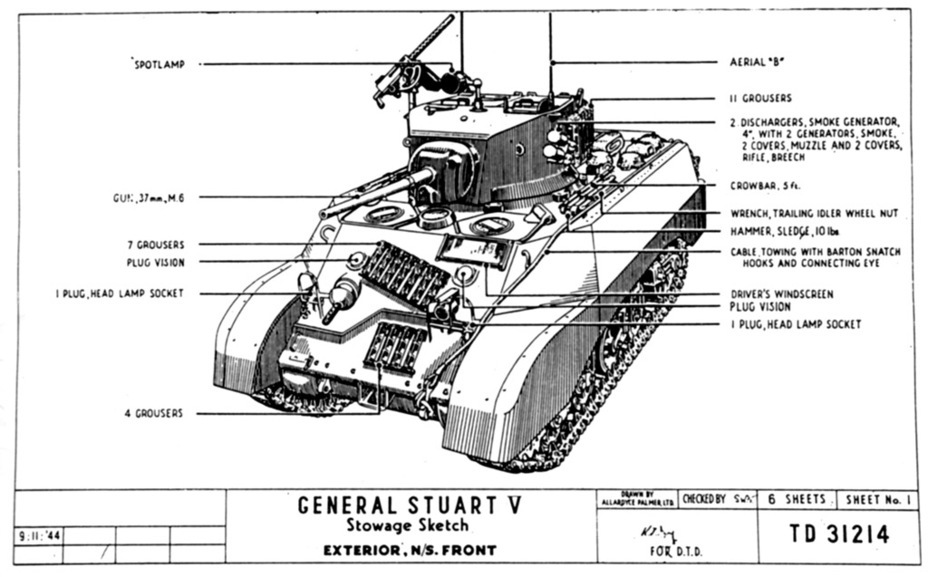
In the standard configuration, the Stuart V received two smoke grenade launchers on the left side of the turret. The grouser mounts moved to the front of the hull. The onboard equipment changed too: a mount for a handheld fire extinguisher and a first aid kit were added to the rear. Sten submachineguns were used instead of Thompsons as personal defense weapons. A flare gun and ammunition for it were also stored in the turret. Finally, the American SCR 508 radio was replaced with the Wireless Set No.19.
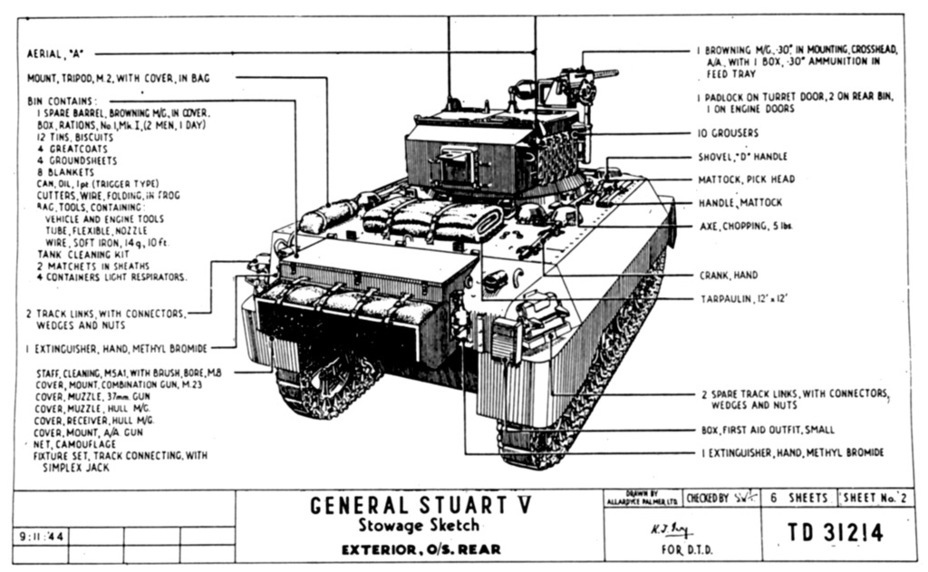
Supplies for Britain meant that armies which used British vehicles would receive these tanks as well. This mostly meant the Poles, which actively fought in Italy.
The Stuart V was also used by the People's Liberation Army of Yugoslavia. The first tanks came under Tito's command in the fall of 1943, but didn't see combat until much later: June of 1944. They were used by the 1st Yugoslav Tank Brigade. 75 of these tanks ended up in this unit, and they were actively used in combat. In Yugoslavia, the Stuart V's enemies were mostly obsolete tanks, including former Polish, French, and Italian vehicles. The 37 mm gun in the American tank was sufficient to penetrate their armour.
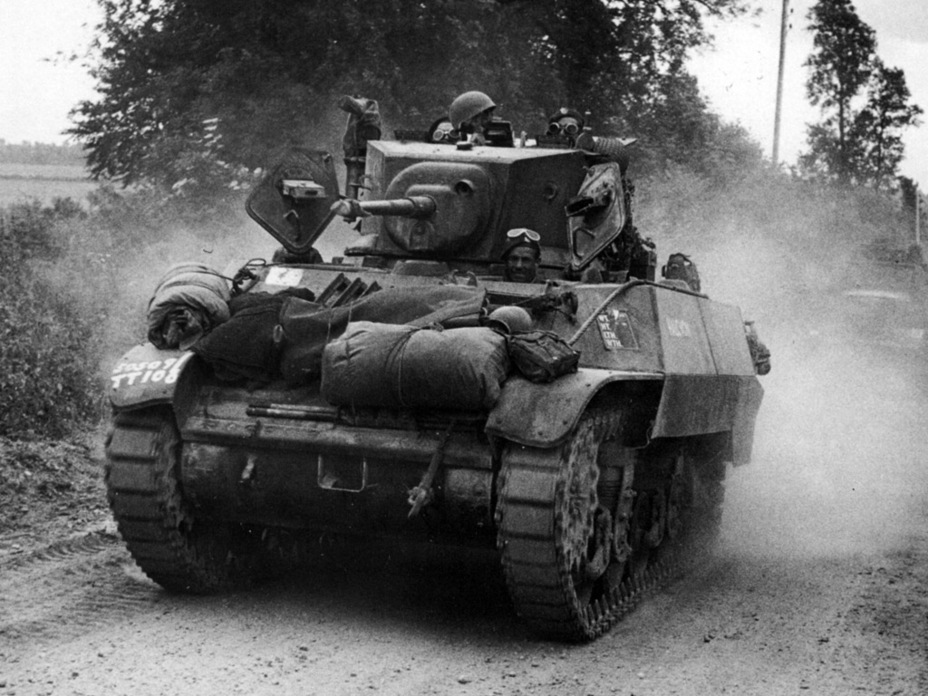
The British had no illusions about the abilities of light tanks. For this reason, they weren't only used in their standard form. Just like the Stuart I-IV were converted, the tank was used to make specialist vehicles starting in the summer of 1943. One of the most common modifications was the Stuart Recce. The «recipe» for this tank was simple: the turret was removed and a Browning M2HB machinegun was installed in the front. In some cases, additional armour plates were installed around the turret ring. The Stuart Recce was used as a reconnaissance vehicle, as it was more mobile than a tank and protected its crew better than an armoured car.
The Stuart Kangaroo, an APC, had a similar design. The third modification was also a turretless tank, used as an artillery tractor. It was used, for example, to tow 17-pdr anti-tank guns.
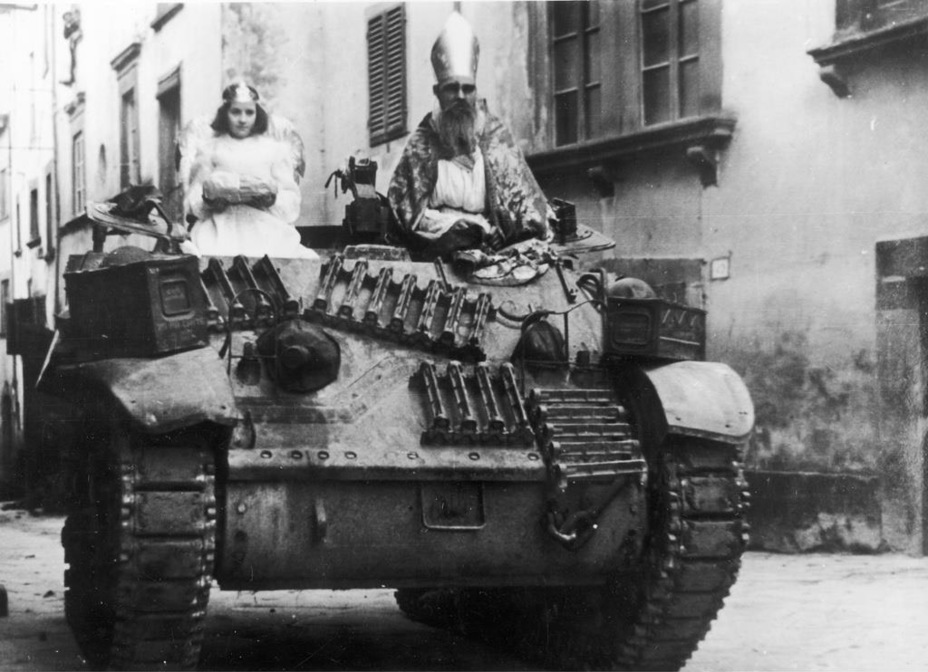
These specialist tanks were first used in Italy in the fall of 1943. The number of these conversions increased with time, as the design was quite good. They were also widely used during the battles in Normandy in the summer of 1944.
Tanks built on the Stuart V chassis by the Yugoslavians deserve a separate mention. The Stuart Pak tank destroyer is perhaps the most famous of the all. A captured German 7.5 cm Pak 40 was installed in the hull. The regular gun shield protected the crew from the front, and additional armour plates protected them from the sides. According to photographs, more than a few vehicles were built. These were also used by the 1st Yugoslavian Tank Brigade. In addition, the Yugoslavians designed a SPAAG on the Stuart V platform. Instead of a turret, these vehicles had a quad 2 cm Flakvierling 38 AA gun.
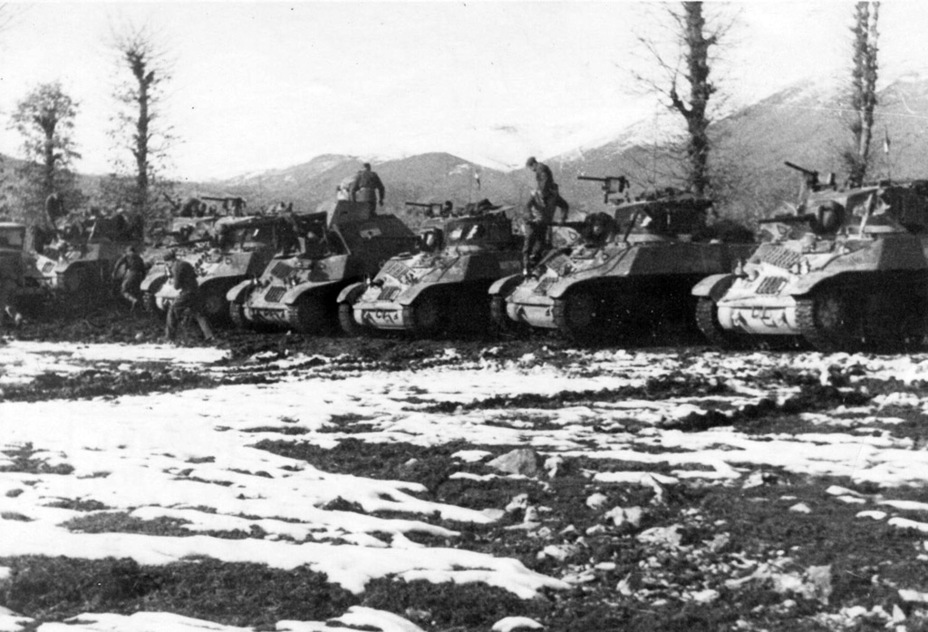
The service of the Light Tank M3A3 in the French army deserves a separate mention. The «Fighting French» received 227 tanks of this type. These vehicles were given to the French directly, which meant that they were using original M3A3s and not Stuart Vs.
These tanks saw the most use in the summer of 1944, during the battles in Normandy. They were also used in the offensive that resulted in the liberation of Paris. The French kept using them until the end of the war. Unlike the British tanks, these Light Tanks M3A3 were not altered.
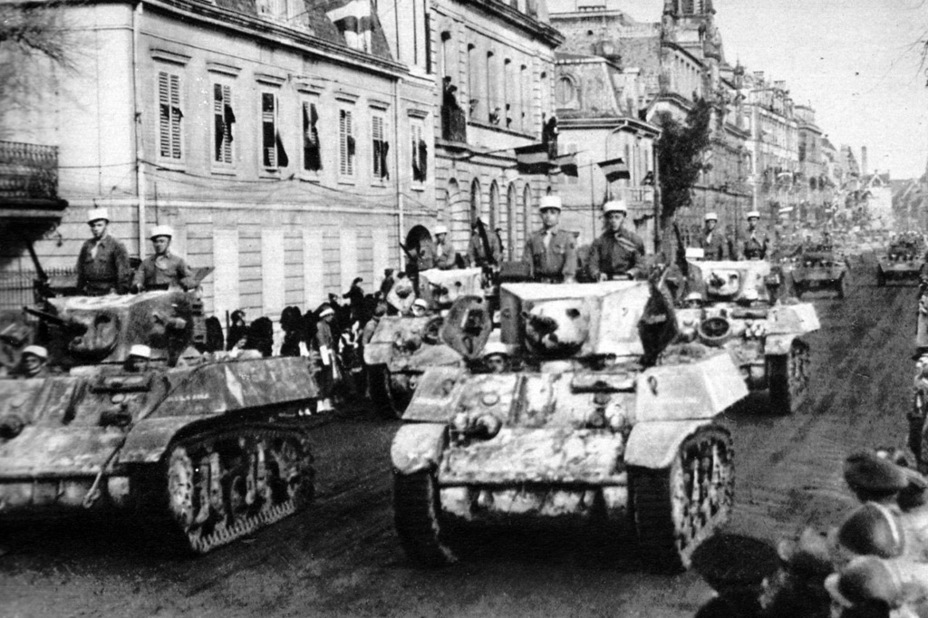
The second largest user of the Light Tank M3A3 was China. China received 1000 tanks of this type in total, and actively used them starting in 1943. Like the British, the Chinese converted some tanks into turretless reconnaissance vehicles. These vehicles were often equipped with armoured plates to protect them from the front and sides. The armament was the same as on the Stuart Recce: a Browning M2HB machinegun on a pintle mount in the front.
Chinese M3A3s ended up serving longer than other tanks of this type. After WWII, they were actively used in the civil war, which ended in 1949 with the victory of Mao Zedong. A few tanks were evacuated by the nationalists along with Chang Kai Shek to Taiwan. The M3A3 remained in service with the People's Liberation Army of China and the Taiwanese army for many years.
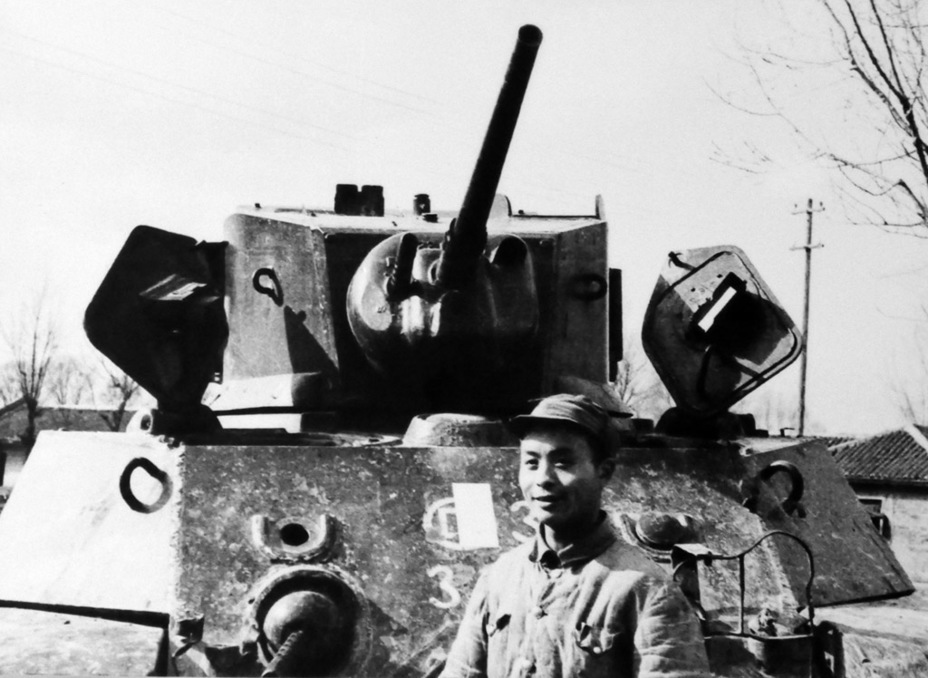
Even though the American army almost completely rejected the Light Tank M3A3, the tank enjoyed a long and eventful career. Around 40 of these tanks remain to this day. They are mostly found as monuments or museum exhibits in places where they served. For example, the tank museum north of Beijing has 4 of these tanks. One of them is a model made on a SU-76M chassis for a movie. Surprisingly many Light Tanks M3A3 can be found in the United States: at least 14 tanks, over a third of the remaining number.
Translated by Peter Samsonov. Read more interesting tank articles on his blog Tank Archives.
Sources:
- NARA;
- Stuart History of the American Light Tank, Vol. 1, R.P. Hunnicutt, Presidio Press, 1992;
- Author's photo archive;
- Charles R. Lemons photo archive;
- http://www.znaci.net;






